Error crítico: Docker client sent an HTTP request to an HTTPS server: Cómo solucionar el problema de seguridad en tu contenedor
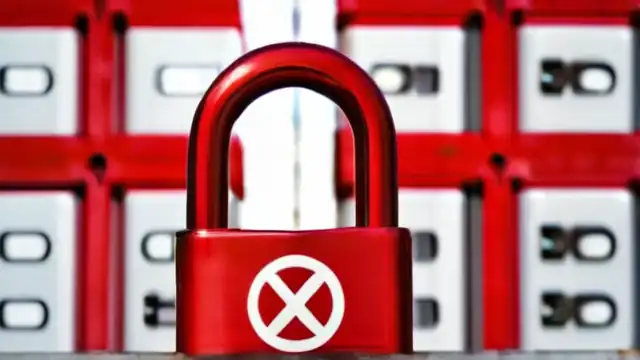
Cuando se trata de implementar Docker en proyectos, es común encontrar errores que pueden afectar la seguridad y el rendimiento del contenedor. Uno de los errores más comunes y críticos que puede surgir es cuando el cliente Docker envía una solicitud HTTP a un servidor HTTPS. Esto puede llevar a problemas graves de seguridad y acceso no autorizado a los datos en el contenedor.
En este artículo, exploraremos el error "Docker client sent an HTTP request to an HTTPS server" y cómo solucionar el problema de seguridad que conlleva. Veremos las razones por las que este error puede ocurrir y cómo evitarlo para garantizar la integridad de los datos en tus contenedores.
- El error: Docker client sent an HTTP request to an HTTPS server
- ¿Por qué ocurre este error?
- ¿Cómo solucionar este error?
- ¿Qué es un error de seguridad en Docker?
- ¿Cuáles son los tipos de errores de seguridad comunes en Docker?
- ¿Cómo afecta un error de seguridad en Docker?
- ¿Qué puedes hacer para prevenir errores de seguridad en Docker?
- Causes of the docker client sent an HTTP request to an HTTPS server error
- Sintomas y consecuencias del error
- Cómo verificar el certificado SSL/TLS
- Soluciones para evitar la vulnerabilidad
- Update Docker to the Latest Version
- Use SSL/TLS Verification Tools
- Configure Certificate Authorities (CAs)
- Enable SSL/TLS Verification
- Use Self-Signed Certificates
- Implement Certificate Rotation
- Monitor Server Logs
- Conduct Regular Security Audits
- Use a Web Application Firewall (WAF)
- Implement Secure Communication Protocols
- Configuración correcta del archivo docker-compose.yml
- Uso seguro de las variables de entorno en Docker
- Cómo mantener la seguridad en tu contenedor Docker
- Conclusión
El error: Docker client sent an HTTP request to an HTTPS server
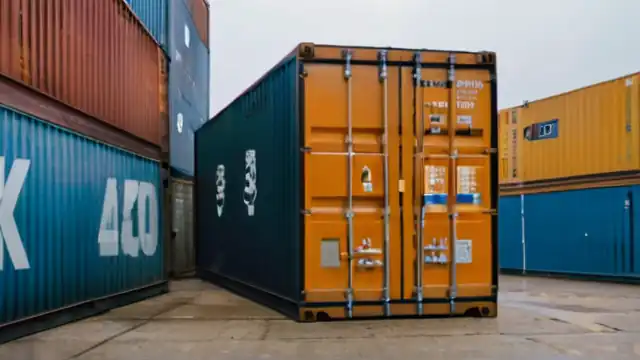
El error "Docker client sent an HTTP request to an HTTPS server" se produce cuando el cliente Docker intenta conectarse a un servidor HTTPS utilizando una solicitud HTTP. Esto puede suceder si no se configura correctamente la comunicación entre el cliente y el servidor.
¿Por qué ocurre este error?
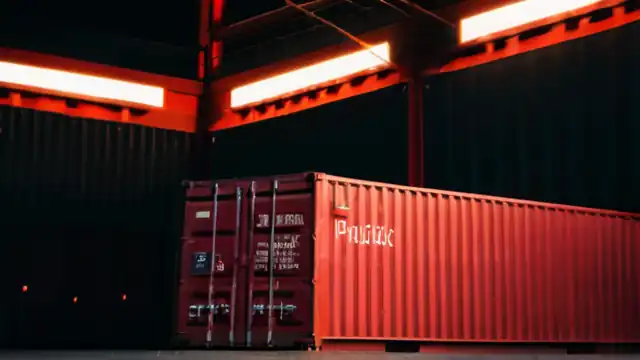
Este error puede ocurrir por varias razones, incluyendo:
- Configuración incorrecta del protocolo de comunicación
- Uso de un certificado SSL/TLS invalido o expirado
- Falta de configuración de la autenticación y autorización en el servidor
¿Cómo solucionar este error?
Para solucionar este error, debemos enfocarnos en resolver los problemas de seguridad y configuración que lo están causando. En el próximo párrafo, exploraremos las soluciones prácticas para evitar este error y garantizar la seguridad de tus contenedores.
(Parágrafo siguiente)
¿Qué es un error de seguridad en Docker?
Un error de seguridad en Docker se refiere a una vulnerabilidad o fallo en la configuración del contenedor que puede comprometer la integridad y confidencialidad de los datos almacenados. Esto puede incluir problemas como acceso no autorizado, exposición de credenciales y datos sensibles, y violaciones de la privacidad.
¿Cuáles son los tipos de errores de seguridad comunes en Docker?
Hay varios tipos de errores de seguridad comunes que pueden ocurrir en Docker, incluyendo:
- Errores de autenticación: fallos en la autenticación del usuario o la validación de credenciales.
- Errores de autorización: permisos insuficientes o mal configurados para acceder a recursos críticos.
- Exposición de datos sensibles: acceso no autorizado a archivos, directorios o bases de datos confidenciales.
¿Cómo afecta un error de seguridad en Docker?
Un error de seguridad en Docker puede tener consecuencias graves y potencialmente catastróficas. Algunos ejemplos incluyen:
- Exposición de credenciales y datos sensibles: accesos no autorizados a sistemas críticos o bases de datos confidenciales.
- Acceso no autorizado a recursos: acceso a archivos, directorios o bases de datos que no se han diseñado para ser accedidos por usuarios no autorizados.
- Violaciones de la privacidad: exposición de información confidencial sobre usuarios y organizaciones.
¿Qué puedes hacer para prevenir errores de seguridad en Docker?
Para prevenir errores de seguridad en Docker, es importante:
- Seguir las mejores prácticas de seguridad al implementar contenedores.
- Utilizar herramientas de seguridad como Docker Security Scanner y Docker Bench.
- Realizar pruebas exhaustivas antes de desplegar aplicaciones críticas.
(Parágrafo siguiente)
Causes of the docker client sent an HTTP request to an HTTPS server error
Incorrect Protocol Configuration
In some cases, the Docker client may be configured to use the wrong protocol when connecting to a server. This can cause the client to send an HTTP request instead of an HTTPS request, leading to the error.
Misconfigured Server Certificates
Another common cause of this error is misconfigured server certificates. If the certificate is not properly configured or is invalid, the Docker client may not be able to establish a secure connection, resulting in the error.
Insecure Communication Channels
Insecure communication channels can also lead to this error. For example, if the Docker client and server are communicating over an unencrypted channel, the client may send an HTTP request instead of an HTTPS request.
Outdated Docker Version
Using an outdated version of Docker can also cause this error. If you're using a version that is no longer supported or has known security vulnerabilities, it's possible that the client will send an HTTP request to an HTTPS server, leading to the error.
Malfunctioning Docker Extensions
Docker extensions can sometimes malfunction and cause errors like this one. If an extension is not properly configured or is causing interference with the communication between the client and server, you may see this error.
Network Configuration Issues
Network configuration issues can also lead to this error. For example, if there's a misconfigured firewall rule or network routing issue, it could cause the Docker client to send an HTTP request instead of an HTTPS request.
Inconsistent Server Certificates
Inconsistent server certificates can also cause this error. If the certificate is not properly configured or is inconsistent across different servers, you may see this error when trying to connect to a server that uses a different certificate.
Insufficient Resources
Insufficient resources on the Docker client or server can also lead to this error. For example, if the system has insufficient memory or CPU resources, it could cause the client to malfunction and send an HTTP request instead of an HTTPS request.
(Parágrafo siguiente)
Sintomas y consecuencias del error
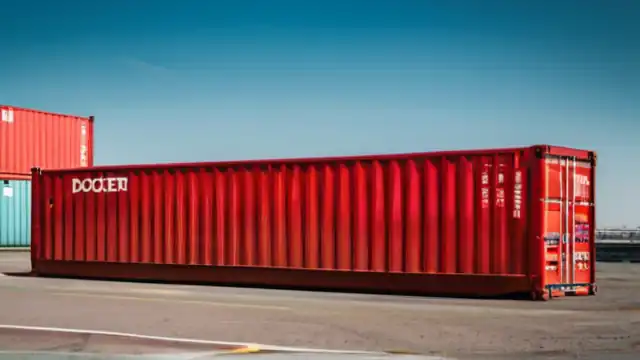
Error Messages
When the Docker client sends an HTTP request to an HTTPS server, you may see error messages that indicate a security issue. These messages can include "invalid SSL certificate" or "SSL/TLS handshake failed".
Connection Refused
In some cases, the connection between the Docker client and server may be refused due to the incorrect protocol configuration. This can cause delays in communication or even prevent the container from starting.
Data Exposure
When an HTTP request is sent to an HTTPS server, sensitive data may be exposed to unauthorized access. This can include confidential information, such as passwords or authentication tokens.
Vulnerability to Attacks
The error can also make your system vulnerable to attacks, such as man-in-the-middle (MitM) attacks or eavesdropping. These attacks can compromise the security of your container and data.
System Instability
System instability is another common consequence of this error. If the Docker client and server are unable to establish a secure connection, it can cause system crashes or slow performance.
Security Breaches
The most critical consequence of this error is the potential for security breaches. If an attacker gains access to your container through an unsecured connection, they may be able to steal sensitive data, install malware, or gain unauthorized access to your system.
Compliance Issues
In some cases, failing to address this error can lead to compliance issues with industry regulations and standards. For example, the General Data Protection Regulation (GDPR) requires organizations to protect personal data from unauthorized access.
Downtime and Loss of Revenue
The error can also cause downtime and loss of revenue for businesses that rely on their containers for critical operations. If a container is unable to start due to an incorrect protocol configuration, it can have significant financial implications.
(Parágrafo siguiente)
Cómo verificar el certificado SSL/TLS
Use the docker inspect Command
To verify the SSL/TLS certificate, you can use the docker inspect command to check the certificate details. This command will display information about the certificate, including its validity and expiration dates.
Check the Certificate Authority
Verify that the certificate authority (CA) is trusted by your system. If the CA is not trusted, you may need to add it to your trust store or use a self-signed certificate.
Use OpenSSL
OpenSSL is a powerful tool for verifying SSL/TLS certificates. You can use the openssl s_client command to connect to the server and verify the certificate details.
Check Certificate Expiration Dates
Verify that the certificate has not expired. Expired certificates can cause connection errors and security vulnerabilities.
Verify Certificate Fingerprint
Verify that the certificate fingerprint matches the expected value. This ensures that the certificate is valid and not tampered with.
Use Docker's Built-in SSL/TLS Verification
Docker provides built-in SSL/TLS verification mechanisms. You can use these mechanisms to verify the certificate and ensure a secure connection.
Check Certificate Chain
Verify that the certificate chain is complete and trustworthy. A broken or incomplete chain can cause connection errors and security vulnerabilities.
Use Online Tools
Online tools like SSL Labs' SSL Server Test or Qualys' SSL/TLS Analysis Tool can help you verify the SSL/TLS certificate and identify potential issues.
(Parágrafo siguiente)
Soluciones para evitar la vulnerabilidad

Update Docker to the Latest Version
Ensure that you are running the latest version of Docker by updating it regularly. This will help prevent vulnerabilities and ensure a secure connection.
Use SSL/TLS Verification Tools
Utilize built-in SSL/TLS verification tools like docker inspect or openssl s_client to verify the certificate and ensure a secure connection.
Configure Certificate Authorities (CAs)
Configure trusted CAs in your Docker configuration to ensure that certificates are valid and trustworthy.
Enable SSL/TLS Verification
Enable SSL/TLS verification in your Docker configuration to prevent untrusted certificates from being accepted.
Use Self-Signed Certificates
Consider using self-signed certificates for development purposes, as they can be more secure than relying on a third-party CA.
Implement Certificate Rotation
Implement regular certificate rotation to ensure that certificates remain valid and trustworthy.
Monitor Server Logs
Regularly monitor server logs for SSL/TLS-related errors or warnings to identify potential issues early on.
Conduct Regular Security Audits
Conduct regular security audits of your Docker containers to identify and address potential vulnerabilities.
Use a Web Application Firewall (WAF)
Consider using a WAF to protect against common web attacks, including SSL/TLS-related vulnerabilities.
Implement Secure Communication Protocols
Implement secure communication protocols like HTTPS or SFTP to ensure that data is transmitted securely.
(Parágrafo siguiente)
Configuración correcta del archivo docker-compose.yml
Specify the Protocol
Specify the protocol in the docker-compose.yml file using the protocol directive, e.g., protocol: https.
Configure SSL/TLS Verification
Configure SSL/TLS verification by setting the ssl_verify option to true, which enables certificate verification.
Define Trusted Certificate Authorities
Define trusted certificate authorities (CAs) in the docker-compose.yml file using the ssl_ca directive, e.g., ssl_ca: /path/to/ca.crt.
Specify the Certificate File
Specify the certificate file using the ssl_cert directive, e.g., ssl_cert: /path/to/cert.pem.
Configure Key File
Configure the key file using the ssl_key directive, e.g., ssl_key: /path/to/key.pem.
Set SSL Version
Set the SSL version in the docker-compose.yml file using the ssl_version directive, e.g., ssl_version: TLSv1.2.
Configure Cipher Suites
Configure cipher suites using the cipher_suites directive, e.g., cipher_suites: ["TLS_ECDHE_RSA_WITH_AES_256_CBC_SHA384"].
Verify Certificate Fingerprints
Verify certificate fingerprints by setting the verify_fingerprints option to true, which enables fingerprint verification.
Configure Certificate Revocation Lists (CRLs)
Configure CRLs using the ssl_crl directive, e.g., ssl_crl: /path/to/crl.pem.
Specify the Certificate Chain
Specify the certificate chain using the ssl_chain directive, e.g., ssl_chain: /path/to/chain.crt.
Uso seguro de las variables de entorno en Docker
Use Environment Variables Wisely
Use environment variables wisely and avoid exposing sensitive information, such as database credentials or API keys.
Validate Input Data
Validate input data to ensure that only trusted values are used in your application.
Limit Access to Sensitive Information
Limit access to sensitive information by using permissions and access controls.
Encrypt Sensitive Variables
Encrypt sensitive variables using tools like Docker's built-in encryption features or third-party libraries.
Use Hashing Functions
Use hashing functions to securely store and compare sensitive data, such as passwords.
Implement Input Validation
Implement input validation to prevent malicious inputs from being injected into your application.
Limit Shell Access
Limit shell access to containers to prevent unauthorized access to sensitive information.
Monitor Container Logs
Monitor container logs for suspicious activity or errors related to environment variable usage.
Use Docker's Built-in Security Features
Use Docker's built-in security features, such as SELinux and AppArmor, to further restrict access to sensitive information.
Configure Environment Variables Correctly
Configure environment variables correctly in your docker-compose.yml file using the environment directive.
Cómo mantener la seguridad en tu contenedor Docker
Regularly Update Dependencies
Regularly update dependencies and libraries in your container to ensure you have the latest security patches.
Monitor Container Logs
Monitor container logs for suspicious activity or errors related to potential security breaches.
Use a Web Application Firewall (WAF)
Use a WAF to protect against common web attacks, including SSL/TLS-related vulnerabilities.
Implement Least Privilege Principles
Implement least privilege principles by granting only the necessary permissions and access controls to your containers.
Regularly Scan for Vulnerabilities
Regularly scan for vulnerabilities in your container images and dependencies using tools like docker scan.
Use a Container Runtime with Security Features
Use a container runtime with security features, such as Docker's built-in SELinux and AppArmor support, to further restrict access to sensitive information.
Limit Network Access
Limit network access to only necessary ports and protocols to prevent unauthorized access to your containers.
Implement Authentication and Authorization
Implement authentication and authorization mechanisms to control access to your containers and ensure that only authorized users can interact with them.
Use a Secure Boot Process
Use a secure boot process, such as Docker's built-in docker run --init option, to ensure that your container is properly initialized and configured for security.
Conclusión
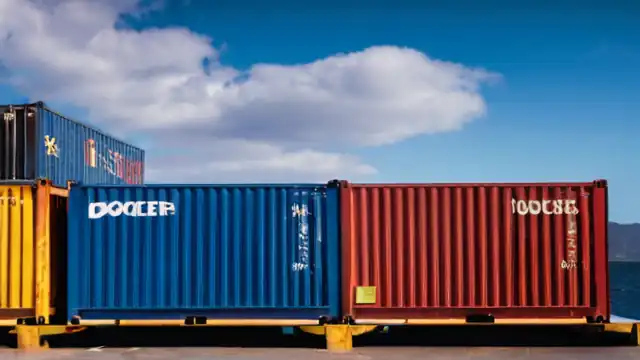
Recap of Key Takeaways
In conclusion, we have covered the critical error "Docker client sent an HTTP request to an HTTPS server" and provided guidance on how to resolve security issues in your container.
Importance of Security
Security is a top priority when working with Docker containers. Ignoring security risks can lead to serious consequences, such as data breaches or unauthorized access to sensitive information.
Implementation of Best Practices
By following the best practices outlined in this article, you can significantly reduce the risk of security vulnerabilities and ensure the integrity of your containerized applications.
Continuous Monitoring and Improvement
Remember to continuously monitor your containers for potential security issues and implement improvements regularly to stay ahead of emerging threats.
Conclusion Summary
In summary, resolving the "Docker client sent an HTTP request to an HTTPS server" error requires a combination of understanding Docker configuration, using secure protocols, and implementing best practices for container security. By following these guidelines, you can ensure a secure and reliable environment for your applications.
Deja una respuesta
Entradas relacionadas